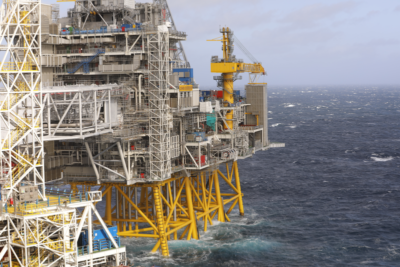Norway can boast its largest trade surplus ever, after exports of oil, gas and electricity at high prices last year. Metals and record-high seafood sales also helped, but ongoing if controversial oil and gas sales accounted for most of the wealth still flowing into the country even as the pandemic and climate crisis drag on.

“After a turbulent 2020, with low prices for important exports like oil, gas, electricity and fish, Norwegian exports made a strong comeback in 2021,” says Espen Kristiansen, chief of foreign trade statistics at state statistics bureau SSB. It released numbers on Monday that can also help explain why Norway’s currency, the krone, has been strengthening lately.
The value of Norwegian exports hit a record NOK 1,377.8 billion last year, “strongly driven by high prices for energy, metals and fish,” wrote SSB in its latest report. The total value of imports, meanwhile, landed at NOK 846.8 billion, leaving Norway with what SSB (Statistics Norway) calls an “historic” trade surplus of NOK 531 billion.
It’s mostly good news at a time when the Norwegian government continues to spend heavily on Corona relief measures and compensation for businesses. Finance Minister Trygve Slagsvold Vedum has proposed spending at least an extra NOK 20 billion on new crisis compensation this year, meaning the government will likely need to pull an estimated NOK 355 billion out of the country’s Oil Fund to balance the budget. Newspaper Aftenposten reported over the weekend how that’s up from the NOK 322.4 billion estimated in December.
Vedum now claims the government wants to phase out all its Corona-related support programs as quickly as possible, to rein in spending. That marks another reversal of his Center Party’s position during last year’s election campaign, when the former government was criticized for not extending financial support and thus offering employers and workers more security.
Oil and gas sales, however, clearly are still flowing into the Oil Fund, where they’re supposed to be saved for future generations. SSB reports a “powerful increase” in revenues from Norway’s two biggest exports, further branding it as “the most important reason” for the strong overall export revenue growth last year. Oil and gas accounted for more than 60 percent of all exports in 2021, compared to 42 percent in 2020.
All other exports from non-offshore sources also did well, however, and were 22 percent higher than in 2020. Imports, meanwhile, grew by 10.7 percent.
Paradox
Some of the statistics may come as a bitter paradox for many Norwegians, meanwhile, who also are stuck paying the highest electricity rates and highest prices at the gasoline pumps ever. Standard petrol prices have topped NOK 20 per liter in the past week (around USD 9.20 per gallon), while monthly electricity bills are three- to four times what they were last winter. Even relatively affluent Norwegians are stunned by the unexpected expenses.
The government is offering some electricity bill compensation for households, but many are still getting bills amounting to thousands of kroner for consumption in December. Little if any compensation is offered to businesses, though, and none for owners of hytter (holiday homes).
News of record export revenues for electricity sent abroad can thus be like salt in the wound for those suddenly getting bills, as in one case, of more than NOK 4,200 (USD 460) for a 60-square-meter hytte in December. If electricity wasn’t exported, supplies could be greater and rates lower within Norway, where relatively cheap hydroelectric power was long viewed as a common good. Now it’s become a commodity subject to the whims of the market.
Another boost for the economy
The record-high export revenues, however, are clearly fueling Norway’s still-strong economy, and removing much of the worry and sting of the Corona crisis. SSB notes that export growth “took off” last summer, sending especially the prices for gas and electricity “sky high” ever since.
The pandemic, according to SSB, has led to rising demand for goods at the expense of services. That’s also driven up prices in combination with transport and distribution challenges.
Norway’s oil and gas exports, however, literally fuel the country’s economy, with SSB noting that the value of gas exports was higher than crude oil exports, which in turn hit their highest level since 2008 (NOK 349.6 billion, compared to NOK 207.8 billion in 2020).
Even more growth is expected this year. As many as 25 new oil and gas projects are on the drawing boards despite all the howls of protest from those worried about climate change. So much money is involved in the oil and gas business that Norwegian officials have no intention of cutting production and are even still subsidizing exploration, especially since the country isn’t held responsible for all the carbon emissions from the oil and gas it produces and exports. The emissions are instead tallied in the countries where the oil and gas is used, not from where it’s exported.
newsinenglish.no/Nina Berglund

